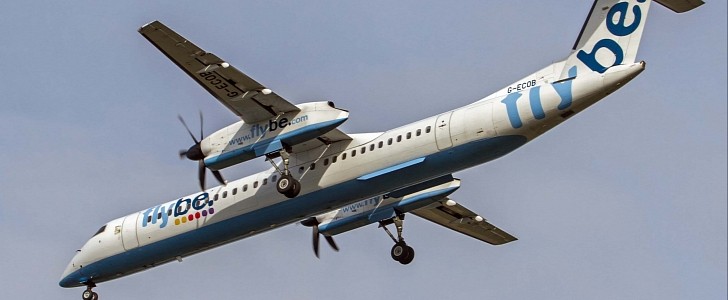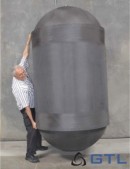What if jumbo jets could use only hydrogen for regular cross-country flights? This might have sounded crazy a few years ago, but it could happen sooner than we think due to a game-changing storage system for liquid hydrogen that claims to offer four times the range of conventional fuel, with the added benefits of zero emissions and lower costs.
Developing hydrogen fuel systems for aviation has its specific challenges, one of them being the requirement for lightweight storage tanks. Until now, this meant less fuel and, therefore, a small range. But the aerospace engineering company Gloyer-Taylor Laboratories (GTL) is using carbon-composite technology similar to the one used in racing bikes to develop the game-changing BHL Cryotank.
Weighing 67 kg (147 lbs) together with the skirt and vacuum Dewar shell, with a length of 2.4 meters (7.8 feet), this tank can store up to 150 kg (330 lb) of liquid hydrogen. This is ten times more than the most advanced storage tanks currently available, enabling a range that’s four times longer than that of aircraft powered by conventional fuel.
HyPoint, a NASA award-winning company that is developing high-performance hydrogen fuel cells, is now partnering with GTL to take this technology to the next level. HyPoint compared the efficiency of conventional fuel, hydrogen plus conventional storage tanks, and hydrogen plus GTL’s tanks, for a 50-seat De Havilland Canada Dash 8 Q300.
The typical range of a Dash 8 powered by a PW123B engine is 1,558 km (968 miles). Using HyPoint’s fuel cell and a conventional storage tank, it would extend to 2,640 km (1,640 miles) or five hours of flight. By switching to the BHL Cryotank, the aircraft could stay in the sky for more than eight hours, with an unprecedented range of 4,488 km (2,788 miles). This opens the door for zero-emission long-distance flights while also decreasing costs.
Combining this ultralight tank with HyPoint’s fuel cell system that claims to deliver three times more power than regular liquid-cooled hydrogen could bring hydrogen-powered long haul flights “at least a decade earlier than expected,” said GTL CEO Paul Gloyer.
Weighing 67 kg (147 lbs) together with the skirt and vacuum Dewar shell, with a length of 2.4 meters (7.8 feet), this tank can store up to 150 kg (330 lb) of liquid hydrogen. This is ten times more than the most advanced storage tanks currently available, enabling a range that’s four times longer than that of aircraft powered by conventional fuel.
HyPoint, a NASA award-winning company that is developing high-performance hydrogen fuel cells, is now partnering with GTL to take this technology to the next level. HyPoint compared the efficiency of conventional fuel, hydrogen plus conventional storage tanks, and hydrogen plus GTL’s tanks, for a 50-seat De Havilland Canada Dash 8 Q300.
The typical range of a Dash 8 powered by a PW123B engine is 1,558 km (968 miles). Using HyPoint’s fuel cell and a conventional storage tank, it would extend to 2,640 km (1,640 miles) or five hours of flight. By switching to the BHL Cryotank, the aircraft could stay in the sky for more than eight hours, with an unprecedented range of 4,488 km (2,788 miles). This opens the door for zero-emission long-distance flights while also decreasing costs.
Combining this ultralight tank with HyPoint’s fuel cell system that claims to deliver three times more power than regular liquid-cooled hydrogen could bring hydrogen-powered long haul flights “at least a decade earlier than expected,” said GTL CEO Paul Gloyer.






